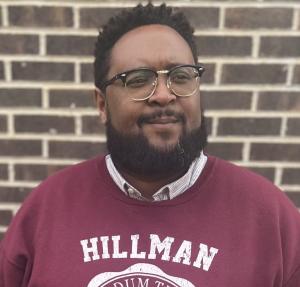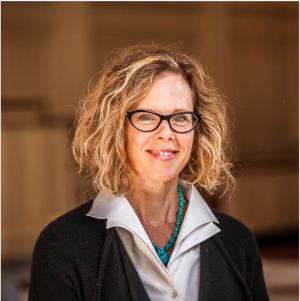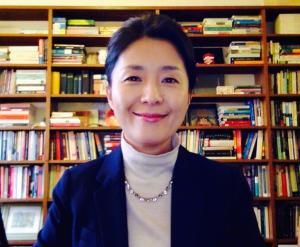Resources

I am not a scholar of Religion or Theology. However, my work as a creative writer and professor of Creative Nonfiction often involves identifying everyday divinities; finding the sacred in small things, the flawed, and the profane. Many of the readers/contributors to this blog might recognize my name as a kind of curator for this space. I serve the Wabash Center as an Educational Design Manager, a job that has brought me great opportunity to learn, share and reflect approaches to teaching and the teaching life. When I became aware that one of our blog publishing dates would fall on Juneteenth, I wanted to take the opportunity to write about it and perhaps encourage others to learn and teach more about the subject…Juneteenth: What is it?June 19, 1865: Gordon Granger of the Union army arrived in Galveston, Texas, to inform enslaved African Americans of their freedom and that the Civil War had ended. General Granger’s announcement put into effect the Emancipation Proclamation, which had been issued nearly two and a half years earlier, on January 1, 1863, by President Abraham Lincoln.Juneteenth is an annual commemoration of this event and the end of slavery in the United States after the Civil War. It has been celebrated by African Americans since the late 1800s. It is the longest running Black holiday. Also known as Freedom Day, Jubilee Day and Cel-Liberation Day.The day was first recognized as a federal holiday in 2021, when President Joe Biden signed the Juneteenth National Independence Day Act into law after the efforts of Lula Briggs Galloway, Opal Lee, and others.I grew up knowing nothing about Juneteenth. This history was not taught to me in my public schools. I first became aware of the day and its significance in college, thanks to my first African American literature professor, and the book by Ralph Ellison. When I heard the story, I was angry. Understandably, I think. The idea that slavery in the United States continued quite a while after the Emancipation Proclamation was deeply frustrating. But I was also upset with the fact that this event seemed whitewashed from my education. Why wasn’t this major moment in African American history discussed every Black History Month? Why wasn’t this made a part of the curriculum I was given?Another part of me was unsurprised. As a Black person in America, I am familiar with the ways my homeland can defer its promises of equality, and how inconvenient histories can be overlooked in order to affirm narratives of American exceptionalism. The story of Juneteenth complicates our understanding of the Civil War, Lincoln’s legacy, and the 13th Amendment to the U.S. Constitution.I wouldn’t encounter Annette Gordon-Reed’s Juneteenth until I was a teacher myself, assigning it to myself and my graduate students to read together. Together, along with other supplementary texts, we’d learn more details about the factors which led chattel slavery to continue in America years after it was said to have ended…States with little or no Union Soldier presence refused/ignored the order to free enslaved people.Border states, including Delaware, Maryland, Kentucky and Missouri, and of course Texas, ignored emancipation.Slave owners threatened to kill slaves if they tried to leave. Some slavers moved to Texas to keep people enslaved. Galveston, Texas was the last stronghold.The Emancipation Proclamation didn’t apply to Indian tribes. The five “Civilized Tribes” (Cherokee, Choctaw, Muscogee, Chickasaw, Seminole) owned Black, Mixed and Indigenous slaves. Chattel slavery among these tribes was not officially ended until 1866.These factors demanded considerable time and effort to navigate and prompted questions that were uncomfortable for the learners and for me as well. But I believe more was gained by engaging with Juneteenth in the classroom—a greater understanding of ourselves in relation to our citizenship, our communities of belonging, and one another.I wish I had the opportunity to have learned about the event sooner in my life and more often throughout my matriculation through academia. Even if it would have been awkward at times. I wish to have been able to observe this commemoration of freedom earlier, and the chances I might have had to unpack its significance with teachers and fellow students.There is no real discussion about freedom in America that does not invoke the lived experience of Black people. As the poet Terrence Hayes suggests, Black people share a historical and constant relationship to freedom. To take this further with a question: in lessons about the liberation found through God’s grace—the freedom from fear discovered in faith and divine will—why wouldn’t we center the lived experiences of a systemically subjugated population? Why not ask students to engage with a moment that signifies a turn toward a more moral universe? I would like to make a case for making Juneteenth a point of discussion in classrooms across all fields of study, but especially in theological and religious education with its potential to position scholars who lead communities and shape public thought. There is so much to be gained in the teaching of Juneteenth.Here is a resource, a Juneteenth Reading List cultivated by the Smithsonian’s National African American History Museum: CLICK HERE. As we consider how we might craft lessons around this holiday, making sure to read as much as we can on the subject feels imperative.If there are readers who have had success teaching Juneteenth and would like to share a reflection on their experience, reach out at quistd@wabash.edu.

In my previous post (the second in a series of three) I reflected on deep learning as part of the formative educational process. I explored what it might look like to focus on students and the world they live in rather than on teaching our own particular (and often narrow) expertise. I suggested that part of the responsibility of forming students’ selves and lives involves commitment to our own personal and institutional growth. My institution (Brite Divinity School at Texas Christian University) holds out a vision of a world transformed by God’s love, mercy, and justice and names as its mission to educate and inspire people to serve God’s diverse world as leaders in churches, the academy, and public life. We claim to value “Scholarship that engages churches, the academy, and public life; Justice that enhances diversity, flourishing and wholeness; and Practice that enlivens intellectual, spiritual, and professional growth.” I resonate deeply with these values. I came to Brite, in part, because of these values. I long for any conversation among my colleagues about how we accomplish these in the classroom and in the lives of our students (and in our own lives, for that matter). I want to hear more about how they model careful listening, how they dignify diversity as a desirable norm, ways in which they manage to draw underrepresented voices out, and how they model effective conflict management in classrooms and hallways. How do they they help students learn to identify the implications of what they learned for engaging the suffering world? What skills and tools, what ways of being do they try to model? How do they enact justice and engage their work toward wholeness in the classroom and beyond? How do they enliven personal, spiritual, and professional growth? How do they teach toward cultivating a more flourishing world? These questions would likely sound ridiculous to many of my colleagues. “It is my job to teach them a discipline,” they might rejoin, “not teach them who or how to be.” Fair enough, I suppose. This is, after all, how most of us were trained. We learned to read, to dissect an argument, to analyze, and maybe to construct. Many of us never had a course in pedagogy, studying neither its purpose(s) nor effective practices. Our doctoral programs had us focused on content rather than process. We have gotten comfortable there and have had to continue the habits we learned as graduate students to have any chance of succeeding in the academy. I get it. I have done it, too. But I want to suggest that what we imagine our role as theological educators to be exposes how we think of our students and our responsibilities to them. Do we see them as students needing to learn biblical exegesis or history or psychoanalytic theory? To what end do we teach these? Would it change how we teach if we understood that our students are the future, the potential embodiment of God’s work in the world, a potential source of resistance, hope, and healing? Surely even those of us who have not studied pedagogy have heard of explicit curricula (what we claim to be teaching, what we focus on) and implicit curricula (what we teach by being ourselves, by the choices we make in the classroom; what we include and do not include on a syllabus; how we engage students and the teaching and learning community, etc.). Perry Shaw asserts that students learn more through the ways schools function—and in the way they experience the classroom—than they do from any verbal or written content they receive. Shaw quotes pedagogical theorist Robert Ferris as saying, “the faculty are the curriculum” (Transforming Theological Education: A Practical Handbook for Integrative Learning [Langham, 2014] 10, emphasis added). If Ferris is correct, then many of us have some serious unlearning to do. Most of us are not training future academics; rather, we are teaching students who will soon be parish ministers and other religious leaders, leaders of not-for-profit organizations, community organizers, and activists. They are or may be parents, partners, neighbors, and leaders. And yet many of us (myself included) teach the way we were taught. We teach the way(s) we are familiar with. We teach as professional scholars. But our students need something different. They need something more. They deserve something more. So does the world we all share. If the faculty are the curriculum, then our students are watching. They are absorbing our ways, our values, and our commitments. They are being shaped by the outlines of our own lives. I won’t speak for you, but my life as an academic is often pretty narrow, focused, and insular. As noted above, it has had to be, in order to gain and keep any status in the academy that I have “earned.” I am comfortable in my habits, the rhythms of my days, and in my heady work. But if Ferris is correct, I should be alarmed by what I am modeling. The academy can be a competitive, self-absorbed, and zero-sum place. The coin of the realm is critique and challenge and jostling for distinction. Is this what we want our students to take from their time with us? If we played out Kant’s categorical imperative, what kind of world would we be helping to create? Such a question invites us teacher/scholars to ask ourselves why we do what we do and to what we want to contribute. It calls us further than that, though. It invites us to ask what kind of being human we are modeling for our students, what we want to be modeling, and what hard and intentional work it will take to close the gap. I am a trained psychotherapeutic clinician, so the idea of sitting with someone to explore the stuck places in myself, to engage my potential areas of growth and change, and to face the wounds I carry does not hold stigma for me. Others will find their own way, and I support that—as long as we can all arrive at the same place: understanding theological education as a formative endeavor, whether we are clear and intentional about the ways we are forming ourselves, our communities, and our students or not. Deep learning is usually referred to in positive ways, but I worry about the kinds of deep lessons our students are taking with them without our intention, our consent, or even without our awareness.

Parasite, directed by Bong Joon-ho, is the first non-English-language, subtitled film to win Best Picture in the Oscars’ 92-year history. President Trump censured the award of the foreign film in a February 2020 campaign rally, wanting to get back to the 1939 classic movie “Gone with the Wind” often criticized for its racist stereotypes. The distributor of Parasite immediately responded to the President with a tweet: “Understandable. He can’t read.” In an earlier speech accepting the Golden Globes Foreign Film Award, Bong observed, “Once you overcome the 1-inch-tall barrier of subtitles, you will be introduced to so many more amazing films.” In contrast to #OscarsSoWhite, the US President’s view of Oscars-not-quite-so-white reminds me of the connections between cultural texts and imperialism Edward Said explores in his work. I want to bring this discussion to my teaching context. When social justice is addressed in the classroom, one may assume that the teacher should discuss particular social issues or subjects that exist outside the classroom. Yet, if social justice is primarily about power, privilege, and oppression, a curriculum is inevitably a site in which social justice issues emerge. Curriculum selects, structures, and reproduces knowledge while authorizing certain constructions of knowledge and hence, producing the truth. How have knowledge and the truth been constructed? The western academy and education are rooted in a modern liberalism that presupposes “human” as the white European male. This ideology is racist and colonialist. In a Wabash podcast, “After Whiteness,” Willie Jennings points out that western education has been shaped by the dominant image of formation, “becoming”—becoming a “white self-sufficient man” and suggests an alternative view that highlights “belonging.” It was enlightening to understand where my frustration, along with a sense of inferiority, arose throughout my fourteen years of theological education in South Korea and the U.S. What you are going to “become” is not only unidentified but also, instinctively, unattainable. In my seminary, I was introduced to Luther, Barth, Bultmann, and Moltmann, just to name a few, by all male professors who had earned their doctorates in the U.S. and Europe. In my first year of Master’s studies in the U.S., I couldn’t believe that I was being taught by the prominent male professors whose names I had only seen in books. One of the professors, whom I respected greatly, said to me, “Korean students’ exegesis skills are good, but there is something they lack.” The second part of his words haunted me and I desired to have what I did not have without knowing what it was. Obviously, the professor did not mean that it is whiteness that I lack. Yet the ghost of whiteness surfaces in classrooms in various forms. The student-led campaign in the U.K., “Why is My Curriculum White?”, argued that the course content at universities served to reproduce the ideology of whiteness. This argument can apply to any discipline which was founded on the work of Anglo-European white males, including theological and biblical studies. What’s wrong with using their profound work that has influenced not only Western civilization and Christianity, but also the minds of people in other parts of the world? Why am I anxious about not using one of the canonized textbooks, which white male scholars authored, for my New Testament introduction course? Because we are speaking about power structures that normalize whiteness and white privilege. Institutional whiteness is incorporated in and reproduced through curriculum. As Jennings reminds us, that is how minoritized students and faculty in religious and theological education suffer the “racially formed sense of inadequacy.” Including one or two recommended readings written by non-white scholars in the syllabus is not enough, though one may start from there. Multiculturalism often promotes diversity by including a few minority individuals or groups, while still concealing power structures that perpetuate white supremacy and racism. In order to overcome white curriculum, the teacher needs to disclose the effects of racism embedded in the discipline and institutions, dismantle the ideology of whiteness inscribed in the textbook, and develop students’ ability to critically evaluate knowledge. There are “so many great [white] movies,” as the President said. Breaking “the 1-inch-tall barrier of subtitles” is more than watching a foreign film. Students know, or need to know, how to read subtitles. Can I read? Asking the question of whether my curriculum reads as white is a matter of social justice—the matter of death-dealing or life-affirming in the classroom.

Smaller theological schools face distinct challenges. One of those challenges is how to provide coverage for a comprehensive theological curriculum while maintaining a reasonable teaching load for elected faculty members while also providing for student needs. Another is finding qualified...

Willie Niegro was the shipping supervisor at the warehouse where I worked summers during high school. He'd been there over 20 years, overseeing the shipping of crates and pallets out the truck bays at the rear of the warehouse. He...

To help Faculty make better curricular decisions, philosophical, programmatic, and pragmatic, Deans need to help Faculty understand the curriculum as a whole. Rather than seeing a theological curriculum as a series of topical courses, the mission of the seminary is...

Curricular integration remains a desire and challenge for many faculty and deans. Additionally, accreditation standards call for integration in a curriculum course of study, and increasingly, accrediting agencies call for evidence of demonstrable integration of the curriculum on the part...

Curriculum integration is an ideal theological school Faculties desire, and sometimes, strive for. Unfortunately, without intentional curriculum design, integration happens more by happenstance and serendipity than by well-crafted intent. Sometimes faculty members attempt occasional team teaching as a way to...